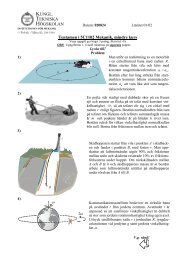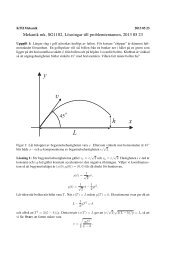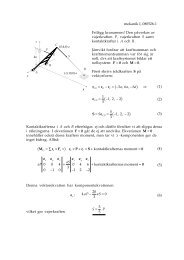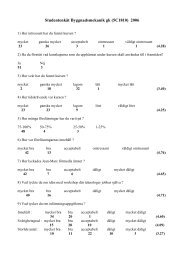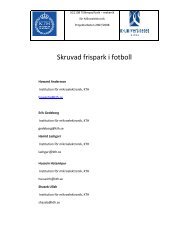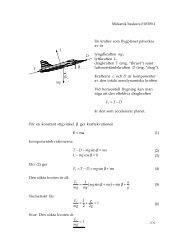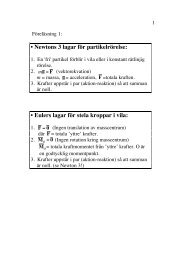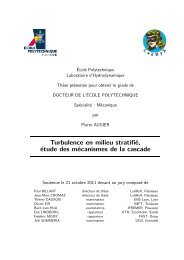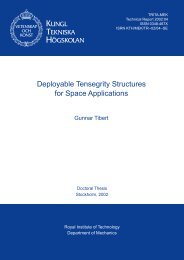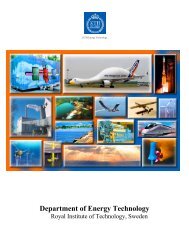Fluid mechanics of fibre suspensions related to papermaking - DiVA
Fluid mechanics of fibre suspensions related to papermaking - DiVA
Fluid mechanics of fibre suspensions related to papermaking - DiVA
Create successful ePaper yourself
Turn your PDF publications into a flip-book with our unique Google optimized e-Paper software.
1.1. THE SHEET FORMING PROCESS 5<br />
dewatering. This can be achieved by pressing a “forming” roll or deflec<strong>to</strong>r<br />
blades against the wire-sheet-wire sandwich from one side (see Norman (1989),<br />
this is called roll forming or blade-forming respectively. Additionally, the localised<br />
pressure pulses created by the blades in blade forming have a significant<br />
influence on the sheet structure. If used properly, they can break-up <strong>fibre</strong> flocs<br />
and improve paper formation. In principle, pressure pulses always have a detrimental<br />
effect on the strength <strong>of</strong> the sheet.<br />
These days there are pure fourdrinier forming units, hybrid forming units<br />
(combinations <strong>of</strong> fourdrinier and twin-wire forming units), and twin-wire forming<br />
units in use, with the majority <strong>of</strong> these being fourdrinier or hybrid units.<br />
The most modern paper machines use a combination <strong>of</strong> roll forming followed<br />
by blade forming and the cost for obtaining one <strong>of</strong> these (paper machine only)<br />
is in the range <strong>of</strong> 2,000,000 Euro ($2,600,000) depending on paper grade.<br />
Recently a numerical model <strong>of</strong> the forming section was presented by Turnbull<br />
et al. (1997), which was improved with a two-dimensional approach by<br />
Chen et al. (1998). A similar model was presented by Zahrai (1997) that could<br />
estimate the pressure and wire position in both roll and blade forming and her<br />
result showed a possibility <strong>of</strong> a standing wave solution. Blade forming was also<br />
the subject in the numerical work presented by Holmqvist (2002), aimed at the<br />
interference between pressure pulses originating from a series <strong>of</strong> blades. A numerical<br />
study by Dalpke (2002), looking at the initial impingement zone in roll<br />
forming, showed agreement with experimental data by Gooding et al. (2001).<br />
For an overview <strong>of</strong> the area see Malashenko & Karlsson (2000), and also the<br />
extensive review by Norman & Söderberg (2001), covering recent developments<br />
in paper forming. Some very recent studies <strong>of</strong> floc behaviour in the forming<br />
zone have been presented by Bergström (2003) and ˚Akesson (2004).




